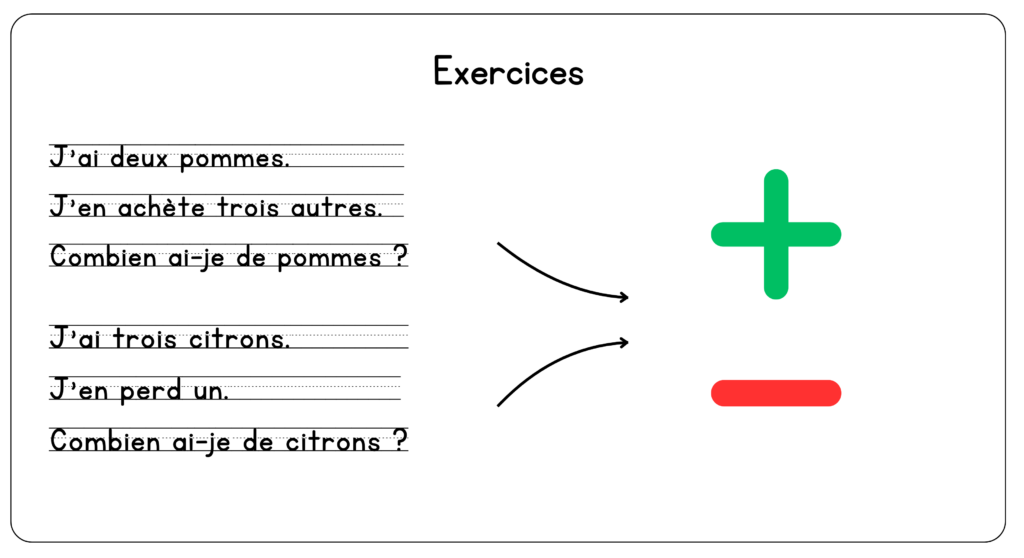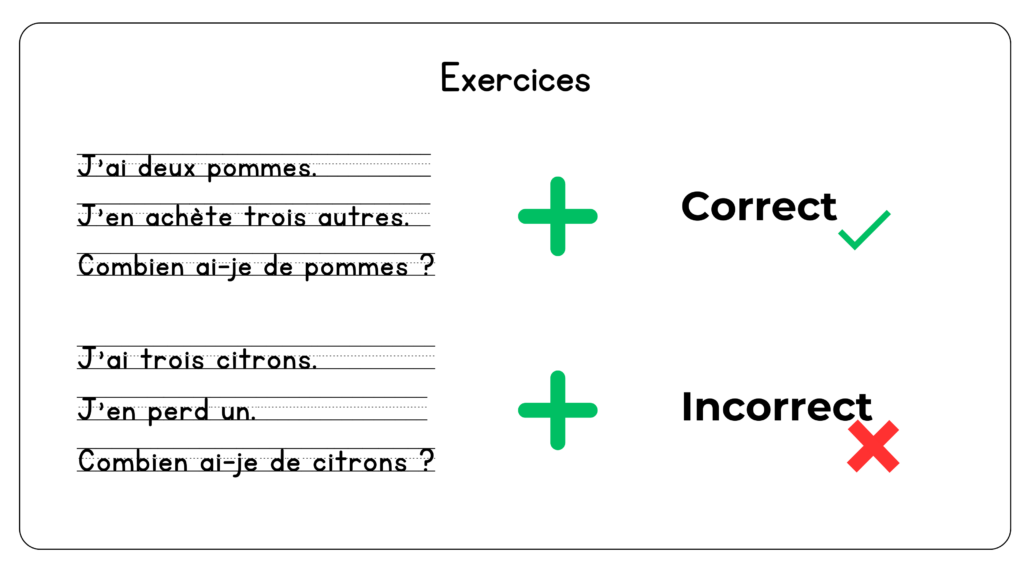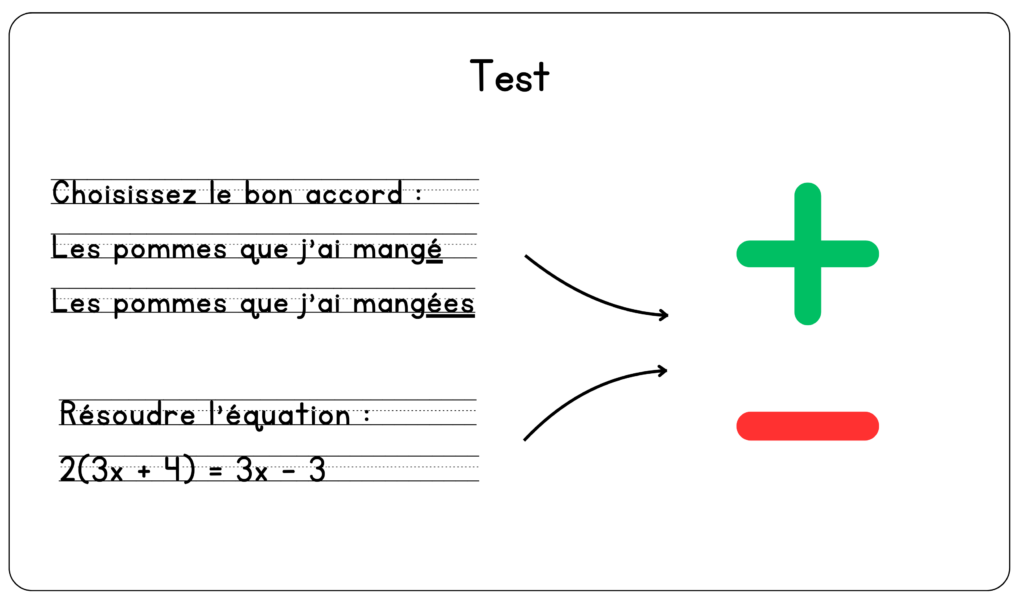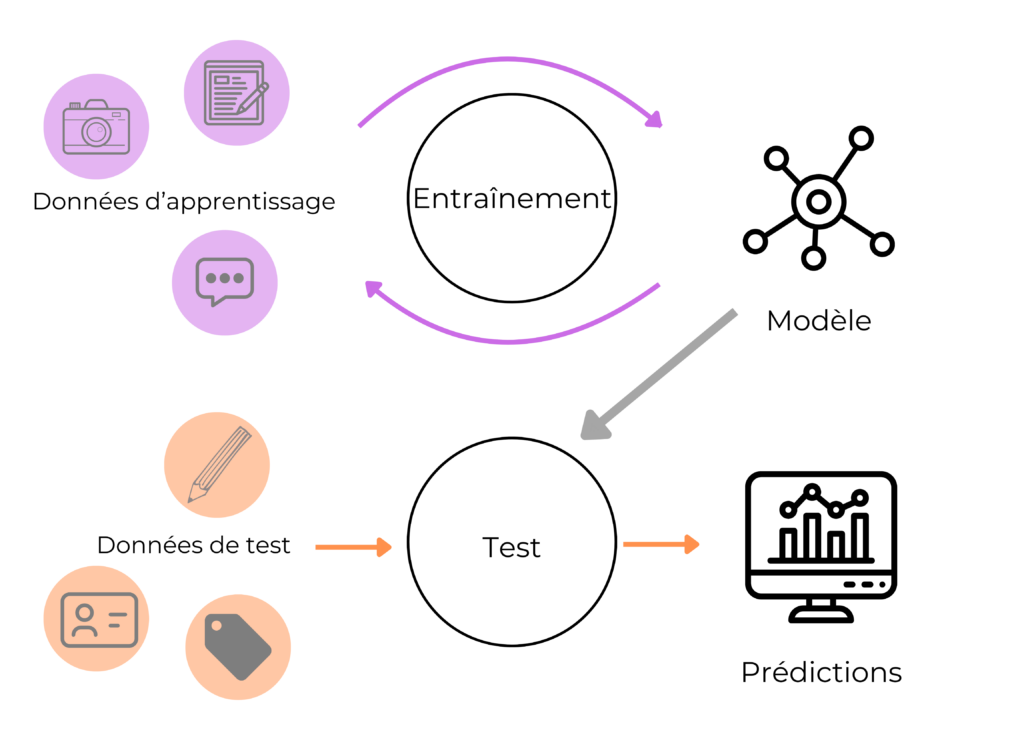Understand the basics of training a machine learning model
Machine learning has a wide range of applications in industries such as retail, human resources and even catering. Consequently, understanding how it works is a valuable asset. However, machine learning is a complex science.
Nevertheless, it's easy to learn the basics of model training.
What is a machine learning model?
Machine learning consists in building a model capable of predicting an outcome based on the data it is trained on.
A machine learning model can have several applications. For example, a model can be trained to predict human behavior, or to perform sentiment analysis.

Although the tasks that can be performed by this type of model are very wide-ranging, the training method varies relatively little. It can be easily understood using an example from everyday life.
Understanding the training of a machine learning model: the example of teaching
Training a machine learning model can be compared toteaching a pupil. In order for a pupil to master concepts or acquire know-how, the teacher must subject him or her to a series of exercises. In this case, the teacher would use a teaching method based on learning by doing only. In other words, the student must solve a problem without drawing on theoretical knowledge acquired beforehand.
For example, if students are to learn to use addition and subtraction, they must be told that only these two methods of calculation can be used to solve a given problem. On the other hand, they must deduce for themselves which of these two operations to apply, based on the statement.

It's at the test of knowledge that the teacher can judge the student's understanding. However, there are a number of rules that must be observed for this learning method to work.
Unlike a model, the student can draw on his or her own experience and understanding of the world. A machine learning model therefore needs more training to achieve satisfactoryaccuracy. It will then be able to make accurate predictions, quickly and in large numbers.
The student, like the model, must complete several exercises before being assessed. To do this, the teacher prepares a sufficient number of exercises, but also ensures that they are coherent, so that the student can apply the mathematical rules correctly. In addition, the exercises must be diversified, so that the student cannot simply learn by heart and repeat a line of reasoning.
At the end of each exercise, the teacher should tell the student whether or not he or she has used the correct operation. This step is crucial to enable students to correct themselves and readjust their application of these mathematical rules.

The student must practice as many times as necessary. After a certain number of practice sessions, and when the student has a satisfactory success rate, the teacher may decide to move on to the final assessment. In order to really check whether the student has developed practice-induced knowledge, the teacher must once again take care to respect certain rules: the final test must not contain exercises identical to those used in the training, and the test must be consistent with the training carried out beforehand.

If all these criteria have been met, the student can be considered to have acquired an understanding of the reasoning involved. As a result, he or she will be able to solve any other problem with a high success rate.
Best practices for training a machine learning model
To recap, training a machine learning model is carried out in two phases. The first, the training phase, allows the model to build itself using a large and varied amount of data, as well as a large number of loops. At the end of the training phase, the model is tested. It is provided with new data, and must be able to perform the operation for which it has been trained.

Ultimately, training a machine learning model requires compliance with several indispensable rules.
- The model must be programmed to perform a task, but it's up to it to discover how, thanks to the validation or invalidation of results during the training phase.
- The data must be varied, sufficiently numerous and consistent with the task for which the model is programmed.
- The data must then be separated into training and test sets, which are completely different.
- Training must be sufficiently complete, with a sufficient number of loops.
Two main problems can be encountered during the validation phase. If the model has not been trained with enough data, or has encountered the same data too frequently, this is called overfitting. Similarly, if the model has not run enough loops before moving on to the test phase, it is called underfitting. In these cases, the model will not perform well.
Are you interested in this topic?